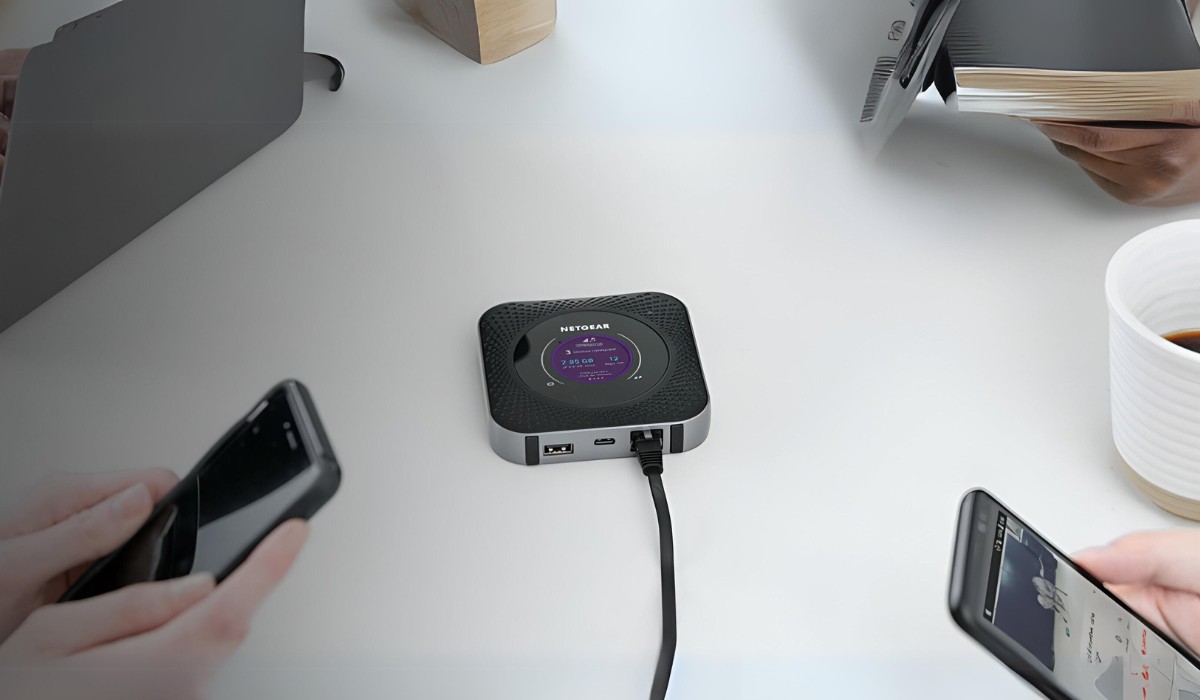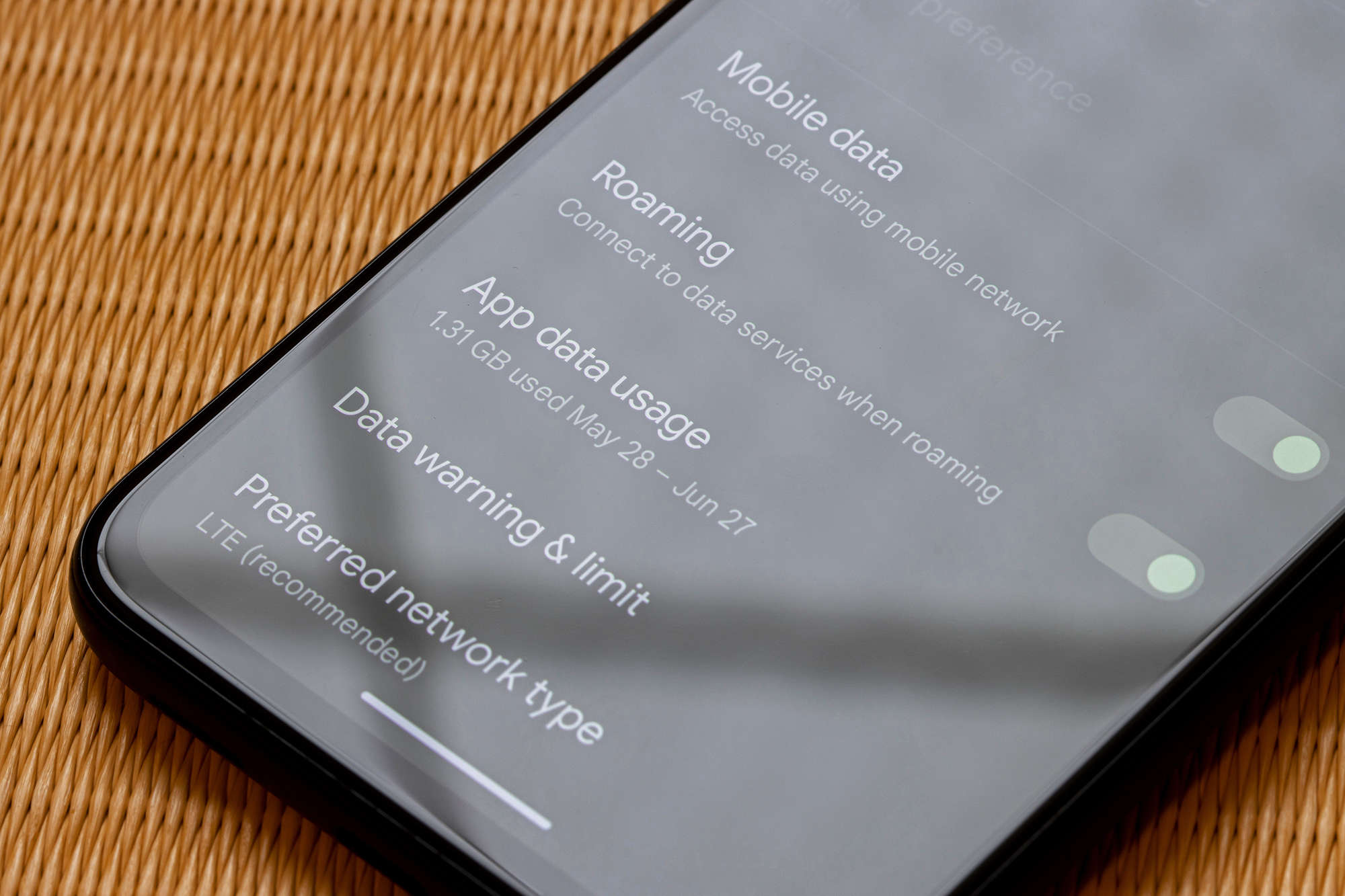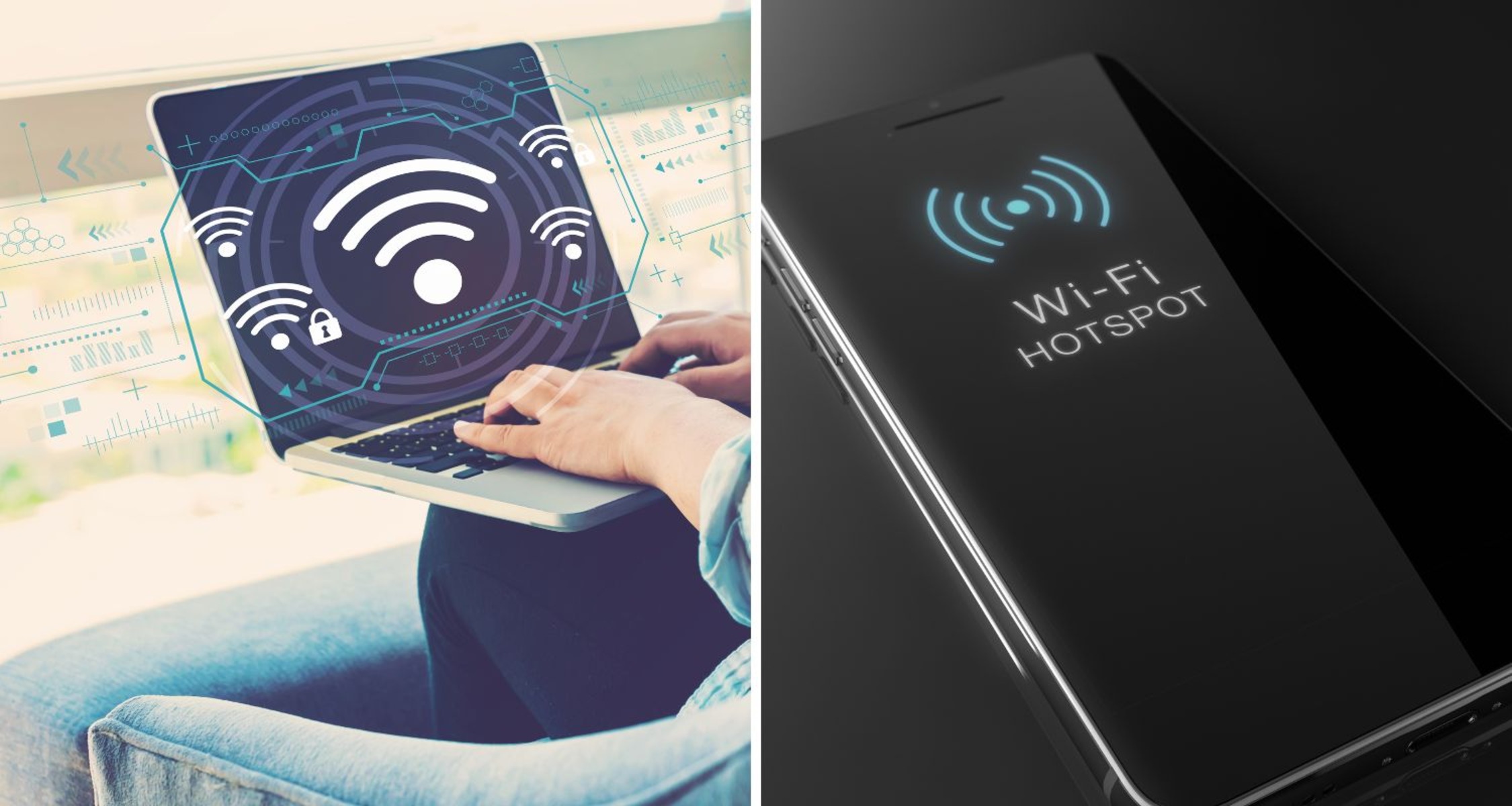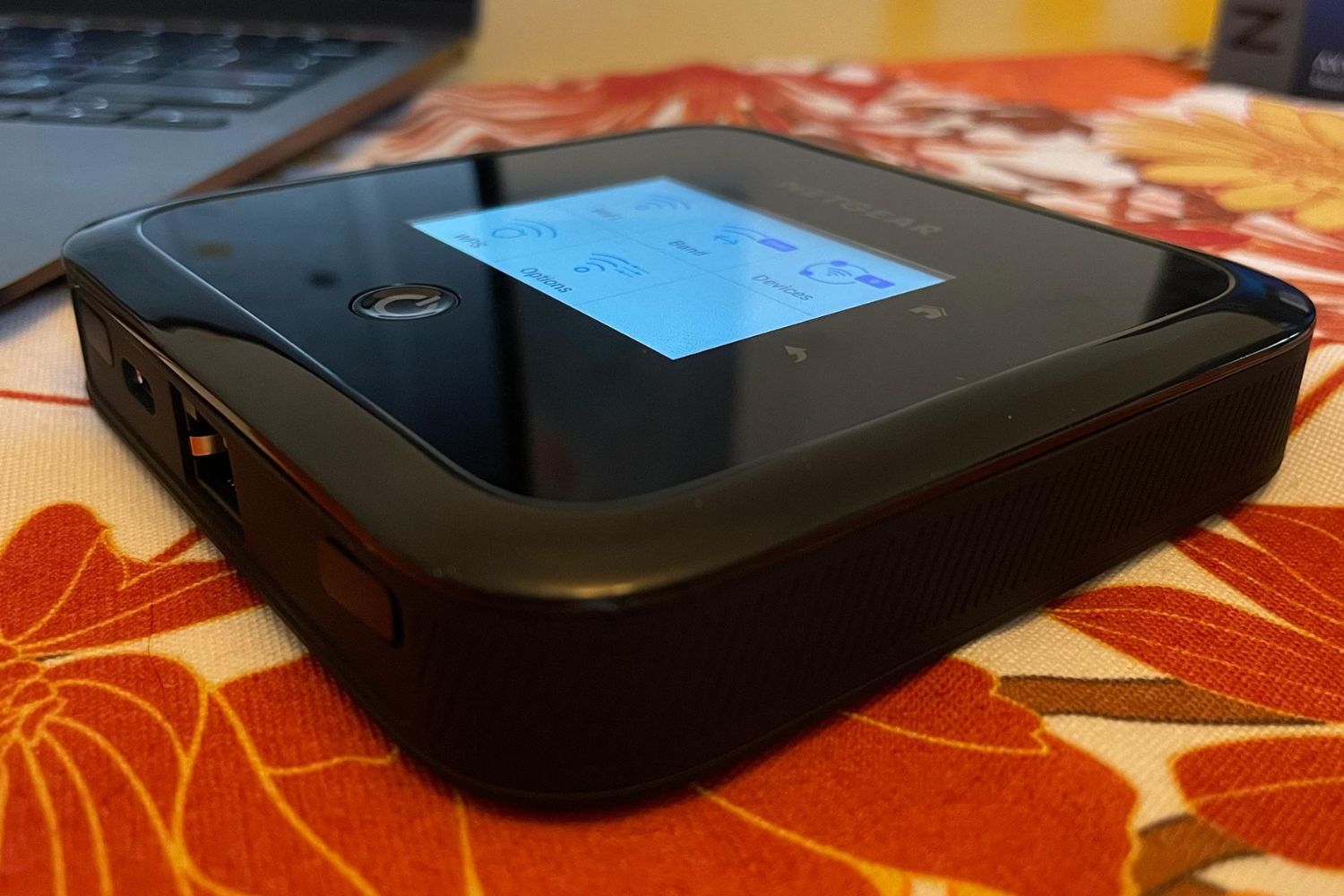Introduction
Hotspots have become an integral part of modern life, offering convenient access to the internet in various public and private settings. From bustling coffee shops to corporate office spaces, the availability of Wi-Fi hotspots has revolutionized the way people connect and work. However, with this convenience comes the challenge of effectively monitoring and managing hotspot usage to ensure optimal performance and security.
As the demand for internet connectivity continues to soar, the significance of maintaining efficient hotspot usage cannot be overstated. Whether in a commercial or residential setting, the ability to track and regulate hotspot usage is essential for several reasons. This includes ensuring fair access for all users, preventing unauthorized access, and optimizing network performance.
In this article, we will delve into the intricacies of hotspot usage monitoring and management, exploring the importance of these practices and providing valuable insights into effective strategies and tools. By understanding the nuances of hotspot usage and implementing best practices for monitoring and management, businesses and individuals can harness the full potential of Wi-Fi hotspots while mitigating potential challenges.
The subsequent sections will shed light on the various aspects of hotspot usage, including the need for monitoring, effective management strategies, and the implementation of robust tools for oversight. Additionally, we will outline best practices that can streamline the monitoring and management of hotspot usage, empowering users to make informed decisions and optimize their Wi-Fi networks for enhanced productivity and security.
Understanding Hotspot Usage
Hotspot usage refers to the utilization of Wi-Fi access points that provide internet connectivity to devices within a specific area. These hotspots are commonly found in public locations such as cafes, airports, hotels, and libraries, as well as in private settings like homes and offices. Understanding hotspot usage involves grasping the dynamics of how individuals and devices interact with these wireless networks, encompassing aspects such as data consumption, user behavior, and security considerations.
Data Consumption and User Behavior
One key aspect of understanding hotspot usage relates to data consumption patterns and user behavior. With the proliferation of bandwidth-intensive applications and content streaming services, the volume of data consumed within hotspots has surged significantly. Users engage in a myriad of activities, ranging from browsing the web and accessing emails to streaming high-definition videos and participating in video conferences. This diverse range of activities impacts the overall bandwidth utilization and network performance within hotspots.
Moreover, user behavior within hotspots varies, with some individuals engaging in prolonged sessions of internet usage while others may connect intermittently. Understanding these behavioral patterns is crucial for optimizing hotspot performance and ensuring fair access for all users. Additionally, recognizing peak usage hours and popular applications can aid in tailoring hotspot management strategies to accommodate varying levels of demand.
Security Considerations
Another vital aspect of hotspot usage understanding pertains to security considerations. As hotspots facilitate wireless connectivity in open environments, they are susceptible to security threats such as unauthorized access, data interception, and malicious activities. Understanding the potential vulnerabilities within hotspot usage is paramount for implementing robust security measures to safeguard sensitive information and prevent unauthorized intrusion.
Furthermore, comprehending the types of devices and operating systems commonly utilized within hotspots is essential for devising effective security protocols. This includes ensuring that devices are updated with the latest security patches and that encryption standards are enforced to protect data transmission. By gaining insights into the security landscape of hotspot usage, organizations and individuals can proactively mitigate risks and fortify their wireless networks against potential threats.
In essence, understanding hotspot usage encompasses a holistic comprehension of data consumption patterns, user behavior, and security considerations within wireless networks. By delving into these facets, stakeholders can equip themselves with the knowledge needed to implement tailored monitoring and management strategies, fostering an environment of efficient and secure Wi-Fi connectivity.
Importance of Monitoring Hotspot Usage
Effective monitoring of hotspot usage holds immense significance in both commercial and residential settings. It serves as a proactive approach to gain insights into network performance, user behavior, and security vulnerabilities, ultimately contributing to enhanced operational efficiency and user satisfaction. The importance of monitoring hotspot usage can be elucidated through the following key points:
1. Optimal Resource Allocation:
By monitoring hotspot usage, organizations can gain valuable intelligence on the allocation of network resources. This includes identifying peak usage periods, popular applications, and data consumption patterns. With this information, administrators can strategically allocate bandwidth and prioritize network resources to accommodate varying levels of demand. This proactive approach ensures that users have access to sufficient bandwidth during peak hours, promoting a seamless and responsive Wi-Fi experience.
2. Security Oversight:
Monitoring hotspot usage plays a pivotal role in bolstering network security. It enables administrators to track device connections, identify unauthorized access attempts, and detect anomalous behavior within the network. By scrutinizing user activities and device interactions, potential security threats can be identified and mitigated in a timely manner. Additionally, monitoring facilitates the enforcement of security protocols, such as encryption standards and access controls, to fortify the network against potential vulnerabilities and malicious intrusions.
3. Performance Optimization:
Understanding and monitoring hotspot usage is instrumental in optimizing network performance. By analyzing data consumption patterns and user behavior, administrators can identify bandwidth-intensive applications or devices that may be impacting network performance. This insight empowers organizations to implement traffic shaping measures, quality of service (QoS) policies, and bandwidth management strategies to ensure equitable access for all users while maintaining optimal network performance.
4. User Experience Enhancement:
Effective monitoring of hotspot usage directly contributes to enhancing the overall user experience. By proactively addressing network congestion, security threats, and performance bottlenecks, organizations can create a reliable and responsive Wi-Fi environment. This, in turn, fosters user satisfaction, boosts productivity, and cultivates a positive perception of the Wi-Fi service provided.
In essence, monitoring hotspot usage is integral to maintaining a robust and secure wireless network. It empowers organizations to make informed decisions, optimize resource allocation, fortify security measures, and elevate the overall user experience. By embracing proactive monitoring practices, stakeholders can harness the full potential of Wi-Fi hotspots while mitigating potential challenges and vulnerabilities.
Strategies for Managing Hotspot Usage
Effective management of hotspot usage encompasses a range of strategies aimed at optimizing network performance, ensuring fair access, and fortifying security measures. These strategies are instrumental in maintaining a responsive and secure Wi-Fi environment, catering to the diverse needs of users while mitigating potential challenges. The following are key strategies for managing hotspot usage:
1. Bandwidth Allocation and Prioritization:
Implementing bandwidth allocation and prioritization mechanisms enables organizations to allocate network resources judiciously. By prioritizing critical applications and services, such as VoIP calls and business-critical applications, administrators can ensure that essential functions receive adequate bandwidth, even during periods of high network utilization. This strategy optimizes the overall network performance and enhances the user experience for mission-critical activities.
2. Access Control and Authentication:
Enforcing robust access control and authentication mechanisms is vital for managing hotspot usage effectively. Implementing secure authentication protocols, such as WPA2-Enterprise or captive portal systems, enables organizations to authenticate and authorize users before granting access to the Wi-Fi network. Additionally, access control measures can restrict unauthorized devices from connecting to the hotspot, mitigating security risks and preventing network congestion caused by unauthorized users.
3. Traffic Shaping and QoS Policies:
Utilizing traffic shaping and Quality of Service (QoS) policies allows organizations to prioritize and regulate network traffic based on predefined rules. By assigning priority levels to different types of traffic, such as voice, video, and data, administrators can ensure that critical applications receive preferential treatment, mitigating latency and ensuring a consistent user experience. This strategy is particularly beneficial in environments where diverse applications compete for network resources.
4. Usage Monitoring and Reporting:
Regular monitoring of hotspot usage through comprehensive reporting tools provides administrators with valuable insights into network performance and user behavior. By analyzing usage patterns, administrators can identify trends, peak usage periods, and bandwidth-intensive applications. This data-driven approach facilitates informed decision-making and enables organizations to adapt their management strategies to align with evolving usage patterns and demands.
5. Security Measures and Threat Mitigation:
Implementing robust security measures, such as encryption protocols, intrusion detection systems, and regular security audits, is crucial for managing hotspot usage securely. By fortifying the network against potential threats, organizations can safeguard sensitive data and prevent unauthorized access. Additionally, proactive threat mitigation strategies, such as real-time monitoring and incident response protocols, contribute to maintaining a secure and resilient Wi-Fi environment.
6. User Education and Policy Enforcement:
Educating users about responsible hotspot usage and enforcing acceptable use policies can significantly contribute to effective management. By promoting awareness of security best practices, data usage guidelines, and acceptable behavior within the hotspot environment, organizations empower users to contribute to a secure and efficient Wi-Fi ecosystem. Clear communication of usage policies and guidelines fosters a culture of responsible and considerate hotspot usage.
Incorporating these strategies into hotspot management practices empowers organizations and individuals to maintain a robust, secure, and responsive Wi-Fi environment. By leveraging these approaches, stakeholders can optimize network performance, fortify security measures, and cultivate a positive user experience within hotspot environments.
Implementing Effective Monitoring and Management Tools
Implementing robust monitoring and management tools is pivotal in maintaining a proactive stance towards hotspot usage oversight. These tools empower organizations and individuals to gain comprehensive visibility into network performance, user behavior, and security incidents, enabling informed decision-making and timely intervention when necessary. Leveraging effective monitoring and management tools involves the deployment of specialized software, hardware, and integrated solutions tailored to the unique requirements of hotspot environments.
Comprehensive Network Monitoring Solutions
Deploying comprehensive network monitoring solutions forms the cornerstone of effective hotspot usage oversight. These solutions encompass a suite of functionalities, including real-time traffic analysis, device tracking, and performance monitoring. By leveraging network monitoring tools, administrators can gain insights into bandwidth utilization, application performance, and device connectivity, facilitating proactive management and resource optimization. Moreover, these solutions often incorporate alerting mechanisms to notify administrators of potential issues or security breaches, enabling swift remediation actions.
Security Information and Event Management (SIEM) Platforms
Integrating Security Information and Event Management (SIEM) platforms into hotspot management practices is instrumental in fortifying security measures and detecting anomalous activities. SIEM solutions aggregate and analyze security-related data from various sources within the network, such as firewalls, intrusion detection systems, and authentication logs. This holistic approach enables the identification of potential security incidents, unauthorized access attempts, and compliance deviations. By leveraging SIEM platforms, organizations can bolster their security posture and proactively mitigate security threats within hotspot environments.
User Behavior Analytics Tools
Incorporating user behavior analytics tools into hotspot management strategies enables administrators to gain insights into user activities, application usage, and behavioral patterns. These tools utilize advanced analytics to discern normal user behavior from anomalous activities, aiding in the early detection of potential security breaches or policy violations. Additionally, user behavior analytics tools contribute to optimizing network performance by identifying bandwidth-intensive applications and user trends, facilitating informed decision-making in resource allocation and policy enforcement.
Mobile Device Management (MDM) Solutions
In environments where mobile devices are prevalent, implementing Mobile Device Management (MDM) solutions is paramount for effective hotspot usage oversight. MDM solutions enable administrators to enforce security policies, manage device configurations, and track device usage within the hotspot network. By centralizing the management of mobile devices, organizations can mitigate security risks, ensure compliance with usage policies, and streamline device provisioning and monitoring processes.
Reporting and Analytics Platforms
Leveraging reporting and analytics platforms provides stakeholders with actionable insights derived from hotspot usage data. These platforms offer customizable dashboards, trend analysis, and historical reporting capabilities, enabling administrators to track key performance indicators, usage trends, and security incidents. By harnessing the power of reporting and analytics, organizations can make data-driven decisions, adapt management strategies based on usage patterns, and demonstrate compliance with regulatory requirements.
Incorporating these monitoring and management tools into hotspot environments empowers organizations and individuals to maintain a proactive and responsive approach to usage oversight. By leveraging specialized solutions tailored to network monitoring, security management, user behavior analysis, and reporting, stakeholders can optimize network performance, fortify security measures, and cultivate a secure and efficient Wi-Fi ecosystem.
Best Practices for Hotspot Usage Monitoring and Management
-
Continuous Monitoring and Periodic Assessments:
Regular monitoring of hotspot usage is essential for identifying usage patterns, performance bottlenecks, and security incidents. By conducting periodic assessments, administrators can adapt management strategies to align with evolving usage patterns and demands, ensuring that the Wi-Fi environment remains responsive and secure. -
Proactive Security Measures:
Implementing proactive security measures, such as encryption protocols, access controls, and intrusion detection systems, is paramount for safeguarding hotspot environments. By staying ahead of potential security threats and vulnerabilities, organizations can fortify their networks and mitigate risks effectively. -
User Education and Awareness Campaigns:
Educating users about responsible hotspot usage and security best practices fosters a culture of awareness and accountability. By promoting user education and conducting awareness campaigns, organizations empower users to contribute to a secure and efficient Wi-Fi ecosystem, reducing the likelihood of security incidents and network misuse. -
Policy Enforcement and Compliance Monitoring:
Enforcing clear usage policies and monitoring compliance with these policies is crucial for maintaining a secure and harmonious Wi-Fi environment. By establishing and enforcing usage guidelines, organizations can mitigate the risk of unauthorized activities and ensure adherence to security protocols and data usage policies. -
Performance Optimization and Resource Allocation:
Optimizing network performance through effective resource allocation and traffic management strategies is instrumental in ensuring a responsive Wi-Fi environment. By prioritizing critical applications, implementing Quality of Service (QoS) policies, and managing bandwidth allocation, organizations can maintain optimal network performance and user satisfaction. -
Regular Audits and Incident Response Planning:
Conducting regular audits of hotspot usage and devising comprehensive incident response plans are vital for proactive risk mitigation. By identifying potential vulnerabilities and formulating response strategies, organizations can minimize the impact of security incidents and maintain a resilient Wi-Fi environment. -
Collaborative Stakeholder Engagement:
Engaging stakeholders, including network administrators, users, and security teams, in collaborative hotspot management initiatives fosters a collective approach to usage oversight. By involving stakeholders in decision-making processes and policy development, organizations can garner diverse perspectives and ensure comprehensive hotspot management. -
Adoption of Automated Monitoring and Management Tools:
Leveraging automated monitoring and management tools streamlines usage oversight and enhances operational efficiency. By deploying specialized software and hardware solutions, organizations can gain comprehensive visibility into hotspot usage, enabling informed decision-making and timely intervention when necessary.
Incorporating these best practices into hotspot usage monitoring and management endeavors empowers organizations and individuals to maintain a robust, secure, and responsive Wi-Fi environment. By embracing proactive security measures, user education initiatives, and collaborative engagement, stakeholders can optimize network performance, fortify security measures, and cultivate a positive user experience within hotspot environments.

























